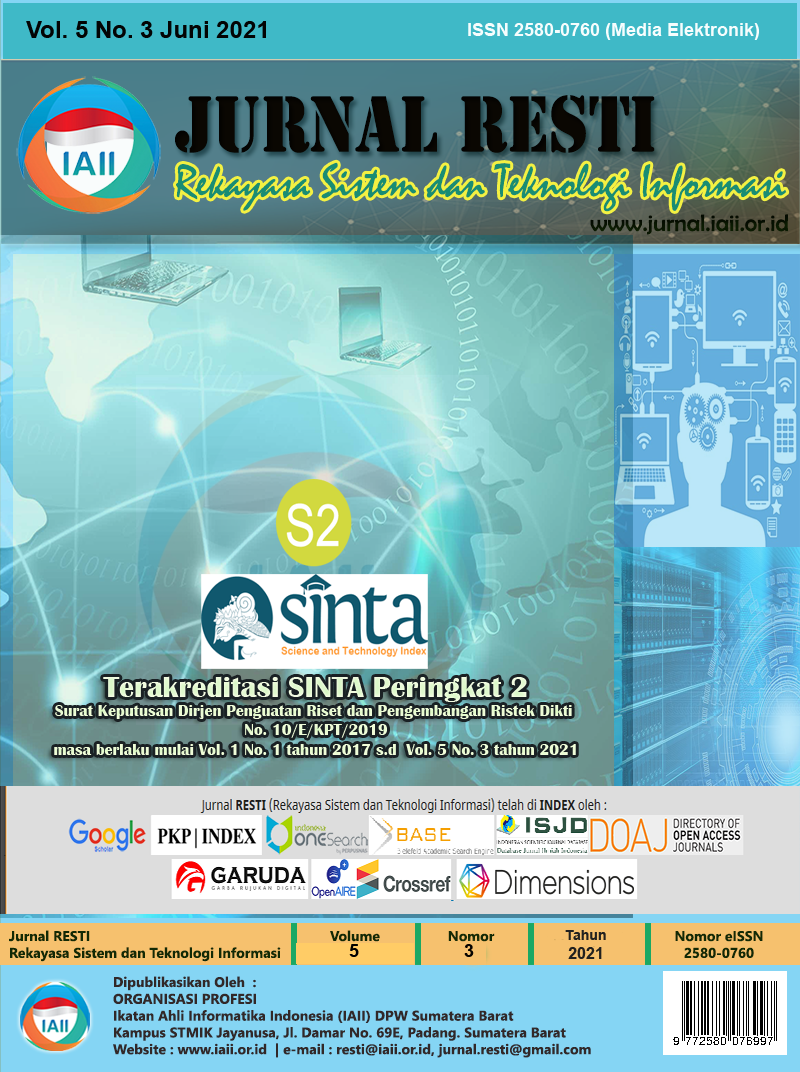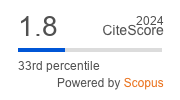Predicting The Number of Tourists Based on Backpropagation Algorithm
Abstract
The number of tourists always fluctuates every month, as happened in Kaliadem Merapi, Sleman. The purpose of this research is to develop a prediction system for the number of tourists based on artificial neural networks. This study uses an artificial neural network for data processing methods with the backpropagation algorithm. This study carried out two processes, namely the training process and the testing process with stages consisting of: (1) Collecting input and target data, (2) Normalizing input and target data, (3) Creating artificial neural network architecture by utilizing GUI (Graphical User Interface) Matlab facilities. (4) Conducting training and testing processes, (5) Normalizing predictive data, (6) Analysis of predictive data. In the data analysis, the MSE (Mean Squared Error) value in the training process is 0.0091528 and in the testing process is 0.0051424. Besides, the validity value of predictive accuracy in the testing process is around 91.32%. The resulting MSE (Mean Squared Error) value is relatively small, and the validity value of prediction accuracy is relatively high, so this system can be used to predict the number of tourists in Kaliadem Merapi, Sleman.
Downloads
References
Dinas Pariwisata DIY. 2019. Statistik Kepariwisataan 2019 [PDF]. Available at: https://visitingjogja.com/download/statistik-pariwisata/ [Accessed 12 December 2020]
Dinas Pariwisata DIY. 2018. Statistik Kepariwisataan 2018 [PDF]. Available at: https://visitingjogja.com/download/statistik-pariwisata/ [Accessed 12 December 2020]
Kiswiranti, D., & Kirbani, H. 2013. Analisis Statistik Temporal Erupsi Gunung Merapi. Jurnal Fisika, 3(1).
Widodo, E., & Hastuti, H. 2019. Riwayat Aktivitas Gunung Merapi: Potensi dan Ancamannya Bagi Sektor Pariwisata. Geomedia: Majalah Ilmiah dan Informasi Kegeografian, 17(1).
Suwarto, T. 2011. Pengaruh Iklim Dan Perubahannya Terhadap Destinasi Pariwisata Pantai Pangandaran. Journal of Regional and City Planning, 22(1), 17-32.
Surwiyanta, A. 2010. Dampak Ekonomi, Lingkungan Dan Sosial Budaya Masyarakat Di Kawasan Kali Adem. Media Wisata.
Sianturi, C. J. M., Ardini, E., & Sembiring, N. S. B. 2020. Sales Forecasting Information System Using the Least Square Method in Windi Mebel. Jurnal Inovasi Penelitian, 1(2), 75-82.
Yudi, Y. 2018. Peramalan Penjualan Mesin Industri Rumah Tangga Dengan Metode Fuzzy Time Series Ruey Chyn Tsaur. Jurnal Informatika Kaputama, 2(1), 53-59.
Haryanto, E. V., & Nasari, F. 2015. Penerapan Metode Fuzzy Mamdani Dalam Memprediksi Tingginya Pemakaian Listrik (Studi Kasus Kelurahan Abc). SEMNASTEKNOMEDIA ONLINE, 3(1), 2-2.
Arifin, F., Robbani, H., Annisa, T., & Ma’Arof, N. N. M. I. 2019. Variations in the Number of Layers and the Number of Neurons in Artificial Neural Networks: Case Study of Pattern Recognition. In Journal of Physics: Conference Series (Vol. 1413, No. 1, p. 012016). IOP Publishing.
Lala, H., Karmakar, S., & Ganguly, S. 2018. Fault Detection and Localization using Continuous Wavelet Transform and Artificial Neural Network Based Approach in Distribution System. International Journal on Electrical Engineering and Informatics, 10(2), 203-219.
Yanto, M., Mayola, L., & Hafizh, M. 2020. Neural Network Backpropagation Identification of Jakarta Islamic Index (JII) Stock Price Patterns. Jurnal RESTI (Rekayasa Sistem dan Teknologi Informasi), 4(1), 90-94.
Lesnussa, Y. A., Mustamu, C. G., Lembang, F. K., & Talakua, M. W. 2018. Application Of Backpropagation Neural Networks In Predicting Rainfall Data In Ambon City. International Journal of Artificial Intelligence Research, 2(2), 41-50.
Siregar, S. P., & Wanto, A. 2017. Analysis of Artificial Neural Network Accuracy Using Backpropagation Algorithm In Predicting Process (Forecasting). IJISTECH (International Journal of Information System & Technology), 1(1), 34-42.
Suhendra, C. D., & Wardoyo, R. 2015) Penentuan arsitektur jaringan syaraf tiruan backpropagation (bobot awal dan bias awal) menggunakan algoritma genetika. IJCCS (Indonesian Journal of Computing and Cybernetics Systems), 9(1), 77-88.
Nawi, N. M., Khan, A., & Rehman, M. Z. 2013. A new back-propagation neural network optimized with cuckoo search algorithm. In International conference on computational science and its applications (pp. 413-426). Springer, Berlin, Heidelberg.
Cynthia, E. P., & Ismanto, E. 2017. Jaringan Syaraf Tiruan Algoritma Backpropagation Dalam Memprediksi Ketersediaan Komoditi Pangan Provinsi Riau. Rabit: Jurnal Teknologi dan Sistem Informasi Univrab, 2(2), 83-98.
Siang, Jong Jek. 2005. Jaringan Syaraf Tiruan & Pemogramannya Menggunakan Matlab. Yogyakarta: ANDI.
Siang, Jong Jek. 2005. Jaringan Syaraf Tiruan & Pemogramannya Menggunakan Matlab. Yogyakarta: ANDI.
Copyright (c) 2021 Jurnal RESTI (Rekayasa Sistem dan Teknologi Informasi)

This work is licensed under a Creative Commons Attribution 4.0 International License.
Copyright in each article belongs to the author
- The author acknowledges that the RESTI Journal (System Engineering and Information Technology) is the first publisher to publish with a license Creative Commons Attribution 4.0 International License.
- Authors can enter writing separately, arrange the non-exclusive distribution of manuscripts that have been published in this journal into other versions (eg sent to the author's institutional repository, publication in a book, etc.), by acknowledging that the manuscript has been published for the first time in the RESTI (Rekayasa Sistem dan Teknologi Informasi) journal ;








